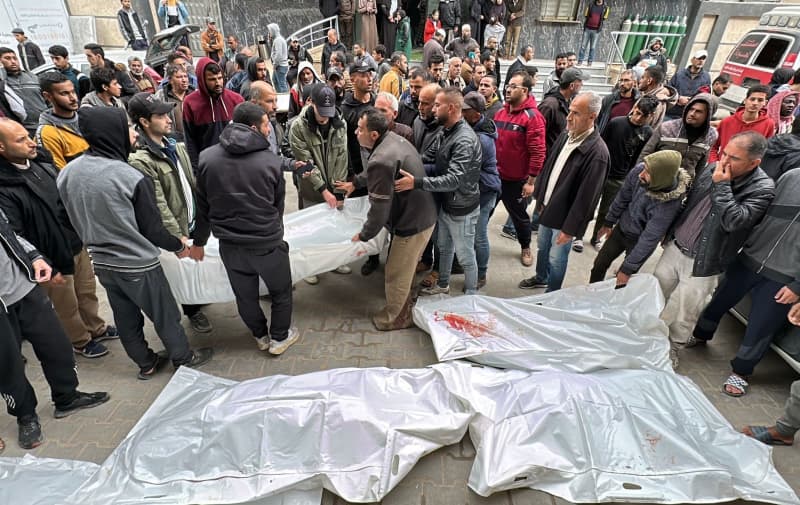Since late Thursday night, reports indicate that over 120 individuals have lost their lives due to Israeli military strikes in the Gaza Strip, emphasizing the continued escalation of violence in the region. Palestinian sources provide these figures, while the Israeli military requests specific geographic coordinates of the attacks to offer further comments. However, acquiring such precise data remains challenging amidst the widespread destruction, impeding reliable verification from independent observers. The devastating impact of the conflict persists, fueling a cycle of tragedy that deeply affects those on the ground.
Casualty reports from Palestinian medical personnel reveal that a significant number of these fatalities includes approximately 25 people killed in northern Gaza, alongside another 20 reported deaths at the Nuseirat refugee camp located in the central region. Additionally, civil defense sources report that 75 individuals have died in Beit Lahia, a town situated in northern Gaza. The figures presented fail to distinguish between combatants and non-combatants, further complicating the assessment of the humanitarian situation amidst ongoing hostilities.
The backdrop to the current violence lies in the broader context of the Gaza conflict, which ignited on October 7 last year. On that day, armed factions from Hamas and other extremist groups launched attacks on southern Israel, resulting in the deaths of approximately 1,200 Israeli citizens. This violent onset marked a significant escalation in hostilities between Israel and Palestinian groups, catalyzing a cycle of retributive violence that has yet to subside. The ongoing conflict has dramatically intensified over time, zapping resources and leading to pervasive destruction in Gaza.
Since the outbreak of the war, casualty figures have risen alarmingly, with at least 44,000 individuals reported killed in Gaza, as per estimates from the Hamas-run health authority. The humanitarian toll of the conflict echoes through the reports of medical personnel on the ground, painting a stark picture of suffering and loss among the Palestinian population. This figure underscores the war’s devastating impact, not just on numbers, but on families, communities, and the overall fabric of life in Gaza, raising urgent calls for intervention and support from the international community.
Amidst these tragedies, communities engage in the somber rituals of mourning. Relatives and supporters gathered to conduct funeral prayers for those killed in the recent Israeli assaults, particularly in places like the Nuseirat refugee camp. These gatherings symbolize a shared grief and resilience among the population, acting as a testament to the heavy losses endured by families, friends, and the broader community as they navigate the challenges posed by ongoing military actions. As funerals unfold, the social fabric of Gaza experiences fractures, compounded by the relentless violence and grief that families must contend with.
The situation in Gaza serves as a poignant reminder of the human cost of war, encapsulating the complexities and tragedies inherent in the Israeli-Palestinian conflict. The stark figures of reported deaths and continued military operations illustrate the urgent need for a resolution and the importance of dialogue amidst persistent hostilities. Addressing the humanitarian crisis and the political undercurrents that sustain it remains a critical endeavor for all stakeholders involved, and emphasizes the necessity for increased international awareness and intervention to alleviate the suffering of countless individuals caught in the crossfire.

